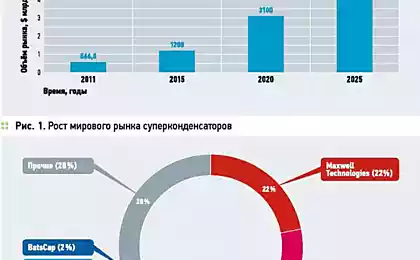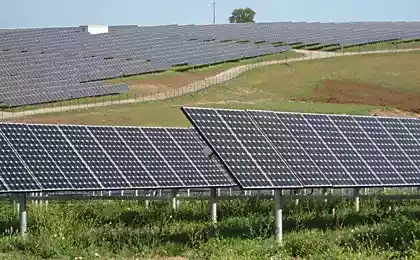201
Renewables accounted for 92.1 percent of all new U.S. capacity
According to the latest Energy Infrastructure Update report from the Federal Energy Regulatory Commission (FERC), 92.1% of newly introduced electricity generation capacity in the United States in January-March 2014 came from renewable energy sources.
According to the report of the public organization SUN DAY Campaign, the situation in the renewable energy market was as follows: solar energy accounted for 584 MW of capacity, wind energy - 427 MW, geothermal energy - 30 MW, biomass energy - 10 MW and hydroelectric power accounted for 8 MW.
On the other hand, no coal-fired power plants, no nuclear or fuel oil facilities were put into operation. However, natural gas power plants with a total capacity of 90 MW and 1 MW from other sources were commissioned. Above you can see the chart, for a better visualization of all of the above.
Looking at the March figures, solar (151 MW), wind (93 MW), and hydro (1 MW) provided 84.5% of new electricity capacity.
Solar power became the second most important source of new energy in the United States in 2013.
However, this data includes only the capacity of large projects, not the capacity of thousands of homes or businesses that have installed solar panels on their roofs. 151 MW of solar power came from just 9 projects.
In total, from January to March, the total number of commissioned large projects amounted to 47 units.
Given that the cost of solar power is constantly declining and represents an excellent return on investment for homeowners, businesses and large developers, we can expect this trend to continue for a very, very long time.
In addition, wind power, while not yet competitive with retail electricity prices, is often the cheapest option for introducing new electric capacity. So, wind energy will certainly grow at a good pace.
Distribution of generating capacity in the United States as of March 2014
For now, certainly the green energy figures in the United States’ overall energy boiler are not as rosy (as you can see in the chart above).
It will take a long time to completely transform the power industry. Even if solar arrays and wind farms can get serious quickly, the decision to close the existing power plant to power companies will not be so easy. But it's slowly getting there.
“Renewables, including hydropower, currently account for 16.3 percent of the total installed generating capacity of the United States. Hydropower accounts for 8.58%, wind energy 5.27%, biomass energy 1.37%, solar energy 0.75%, and geothermal energy accounts for 0.33% of all energy production in the country. “However, the indicators of alternative energy already exceed the indicators of nuclear (9.25%) and fuel oil (4.04%) energy combined,” said the report of the NGO SUN DAY Campaign.
Source: aenergy.ru
Airbus is developing the plane with electric drive
GM invests $449 million in new generation electric vehicle plant






















